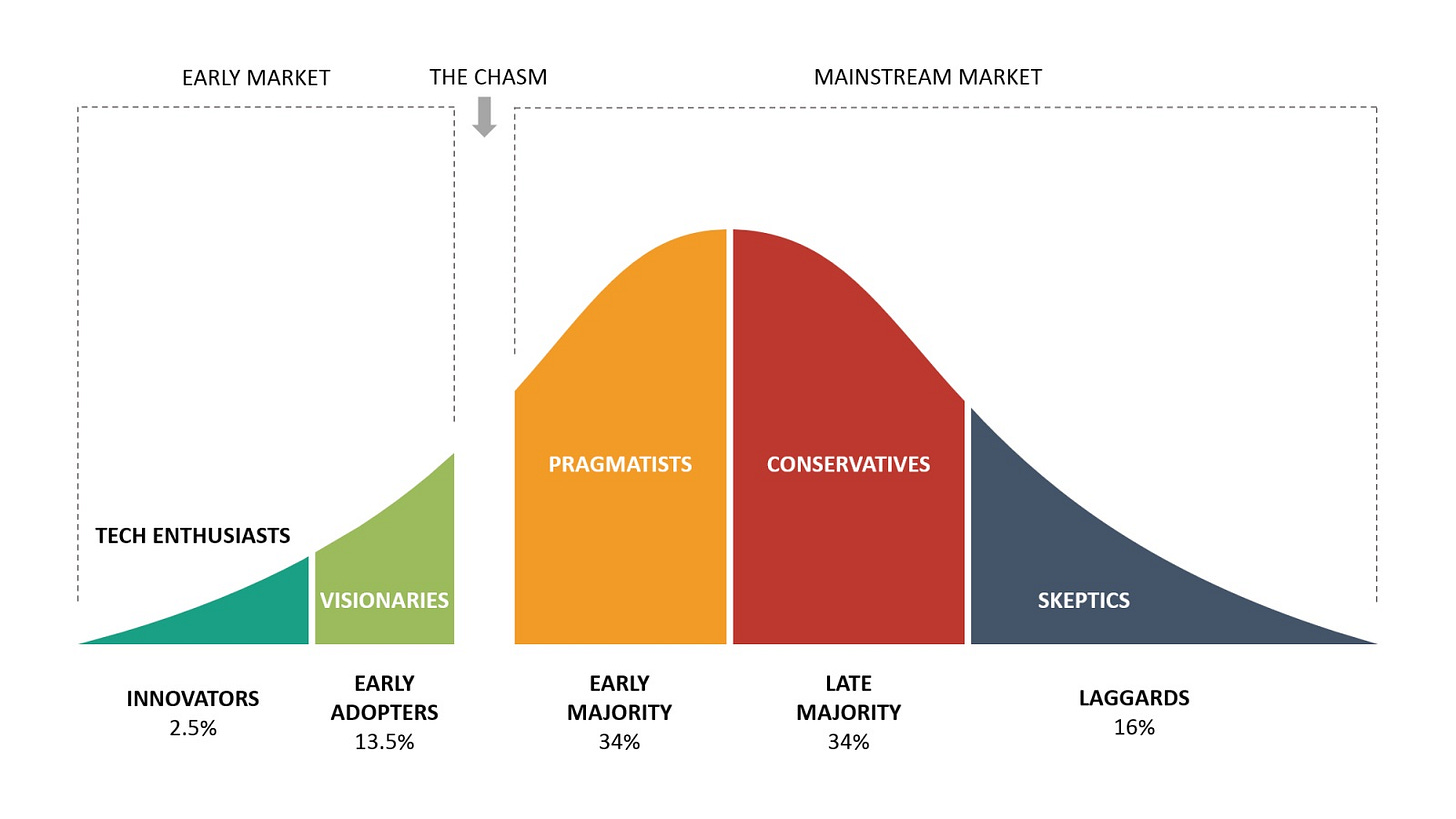💡1 Underrated idea to help you unleash analytics adoption
Hello,
This newsletter will take you about 4 minutes to read.
I. Spotlight: 💡1 Underrated idea to help you unleash analytics adoption
Organizational leaders are often intimidated when they begin their data and analytics (D&A) journey. In reality, getting started with analytics is the easiest part.
Much bigger challenges lie ahead.
Achieving user adoption of solutions is tough. And the real killer is in scaling up your organization’s analytics maturity beyond the first few projects.
Let’s start at the beginning. Why is it relatively easy to launch analytics? Every organization has some obvious pain points that are easy to spot and fix with data.
These low-hanging fruits are your natural first projects. It’s equally easy to spot early adopters - people who are passionate about new technology and are eager to try new stuff.
But once you get past these initial quick wins, things get more challenging.
It’s tricky to identify the next set of projects to deliver sizeable outcomes. Executing them calls for deeper technology skills. Get these two right, and you might stumble at expanding your user base to promote data-driven decisions company-wide.
Default habits devour data strategy for dinner.
No wonder, 91% of leaders report organizational culture as their topmost barrier to becoming data-driven.
Why is it so hard to onboard new users onto data-driven decisions?
The technology adoption lifecycle gives us vital clues.
(Photo: Technology Adoption Curve - Image source: ThinkInsights)
Most technology innovations are embraced first by ‘innovators’ and ‘early adopters.’
These are folks who queue up to buy the first version of the Apple Watch or race to upgrade Android OS on their phones. They aren’t baffled by new technology and don’t mind braving a few early bugs.
But the next set of users, the ‘early majority,’ isn’t as curious or forgiving. It’s an uphill task to onboard the ‘late majority.’ Finally, neither the carrot nor the stick works with ‘laggards.’
A significant gap exists between the first 16% of users and the rest. Crossing this chasm isn’t easy, said Geoffrey A. Moore in his bestselling book.
It’s this chasm that plays spoilsport when you expand analytics initiatives beyond the first few projects in an organization.
So, how do you cross the chasm with data analytics?
Moore reveals several approaches in his book. I’ll share one tip here.
Turn your innovators and early adopters into data champions.
When nurtured well, a few dozen of these early users can turn ambassadors and carry the message to all corners of the organization. Data champions act as evangelists to convince their peers in a language that they readily understand.
Word-of-mouth marketing can be far more potent than the best-planned campaign.
How do you identify the data champions?
Don’t look for people who are experts in technology or for those with certifications in analytics. Data champions are a very different breed. They are:
Functional users with domain expertise.
Energetic who often volunteer for new initiatives.
Passionate about new technology and show a curiosity for data.
Adept at learning new skills and persistent with new solutions.
Good communicators who their peers trust.
(Photo by Chris Lawton on Unsplash)
How can you empower them?
Data champions usually don’t need formal positions, but it doesn’t hurt to brand them as data ambassadors. Give them credit for the small wins they secure along the way in promoting data-driven decisions.
Energize them, grow their tribe, and catapult the adoption of data-driven decisions.
Watch out for these pioneers, for you can readily groom them into leadership roles in change management.
II. Industry Roundup:
1. Article: The Latest State of AI Report shares what leaders do different
10 minutes | McKinsey | Michael Chui, Bryce Hall, Alex Singla, Alex Sukharevsky
AI adoption and its impact on the bottom line has steadily increased in the past year. However, AI’s revenue benefits have declined for supply chain management - AI couldn’t compensate the pandemic era’s supply-chain challenges. Check out the best practices adopted by companies seeing the highest returns from AI.
2. Article: Why becoming a data-driven organization is so hard?
6 minutes | HBR | Randy Bean
The pandemic has raised awareness on the importance of data within organizations. There is greater demand for self-service data insights. However, as per NewVantagePartner’s 2022 survey, just 26.5% of leaders have built a data-driven organization. What drives this disconnect and what are the three ways to tackle this?
III. From my Desk:
1. Interview: How AI can detect serious diseases from your keystrokes
14 minutes | Gramener
During World War II, the US military intelligence discovered a way to identify the sender of a Morse code just based on their typing pattern. Today, people’s keystroke data can not just identify people - it can also tell us how healthy they are and how far diseases have advanced. I spoke to R. A. Bavasso, CEO of nQ Medical who has pioneered research in this area to detect serious diseases such as Parkinson’s.
2. Advisory Role: Joining Seton Hall University Advisory Council
I’ve been invited to join the advisory board of the Customer Experience Program at Seton Hall University, Stillman School of Business in NJ. I’d be reviewing the program courses, sharing industry inputs, and providing guidance to the students. I’m excited about this opportunity and look forward to the interactions.
What would your favorite cartoon characters look like in real life? Trust AI to recreate them! Moe from The Simpsons is my favorite on this list.
Thank you for subscribing and reading the newsletter. I appreciate your attention,
Ganes.
PS: Did someone forward this to you? You can subscribe here.
My Website | LinkedIn | Twitter | YouTube
I’m Ganes Kesari. I publish ‘Data-Driven Future’ to help understand how data shapes our world, explore key trends, and explain what they mean for you today. I speak and write to demystify data science for decision-makers and organizations.
Recent Issues:








